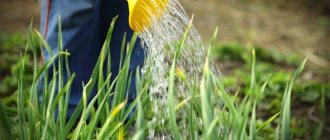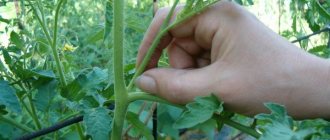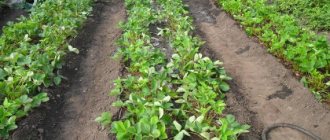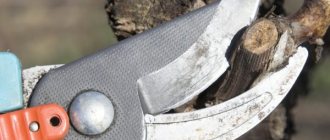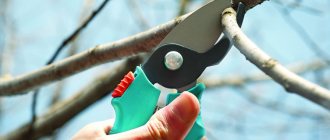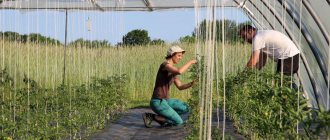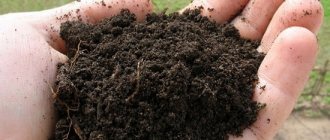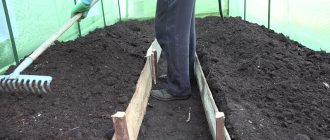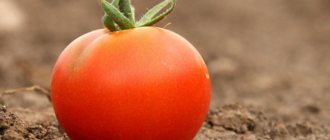When growing tomatoes in a greenhouse, gardeners select certain types and varieties. When choosing, some people put taste first, others productivity, and for others the main thing is ease of cultivation. Due to height restrictions, not even every tomato bush can fit into the greenhouse. But experienced gardeners know that any type of tomato can be adapted for any greenhouse if the bush is formed in time in the way a person needs it. So, let's figure out how to form tomatoes in a greenhouse.
Why do you need to shape tomatoes?
Timely human control over the development of bushes is needed for several reasons. The main one is to force the plant from the vegetative stage of development to flowering, setting and ripening fruits. After all, tomatoes can grow a lot. A stepson appears from the leaf axils and forms a new stem. Shoots are also growing on it. And if you do not intervene in the formation of the bush, then the tomato will spend all its main energy on the formation of leaf mass.
In addition, thanks to shaping, a person influences the yield, taste, size and weight of the fruit. Forming tomato bushes is not only useful, but also interesting.
When is pruning done?
The formation of a bush begins with the appearance of the first stepsons of the seedlings. For medium-sized small-fruited varieties, 2-3 trunks are left, for the rest, one each. Excess shoots are trimmed with scissors or pinched.
Do I need to pick off the lower leaves of tomatoes when replanting? Not always. Only yellowed and wilting greenery is removed from mature seedlings growing in pots for more than 60 days. The leaves are carefully cut or broken off without damaging the stem.
How to shape tomatoes correctly
Before you start growing tomatoes, you need to decide what conditions for growth can be created in a particular greenhouse. After all, the genes contain varietal characteristics, thanks to which they can either stretch upward to a height of up to 7 m and throw out new flower clusters throughout the warm season (indeterminate species), or top off and stop growing after they reach a height of 50 cm (determinate ).
The gardener must take into account not only the height of the ceilings, but the size of the greenhouse area. After all, tomatoes need a lot of light for normal fruiting, and dense plantings can lead to the appearance of diseases and harmful insects. It is important that there are no sudden temperature changes in the greenhouse, so that there is enough watering and fertilizing so that the tomato bushes can compensate for the removal of moisture and plastic substances used for the formation of leaves, flowers and fruits.
The formation of tomato bushes by humans begins 10-14 days after they were planted in the greenhouse. Usually by this time the seedlings have completely adapted to the new living conditions. But the plants continue to develop their root system. The roots receive the necessary substances for this not only from the soil, but also from the leaves. While the plant grows roots, active growth of stepsons occurs in the leaf axils. Thus, the bush tries to increase the volume of its green mass in order to increase its growth both in height and width.
But a tomato bush that is too tall is absolutely not needed by a person in a small greenhouse. After all, the result will be a flowering tree with a dense crown and small fruits. Therefore, measures have to be taken to remove excess shoots and at some time completely stop the growth of the bush. The process of forming tomatoes includes pinching side shoots, pinching growing points, removing leaves and tying up bushes.
What is stepsoning
The process of pinching is the work of removing side shoots that grow from the trunk axils of the leaves. Tomato leaves grow directly from the trunk or side stem, and the stepson appears between the stem and the leaf petiole. The first side shoots are usually removed 2 weeks after planting the seedlings, when their size reaches 3-5 cm. Then a daily inspection is carried out and, as axillary shoots of the required length appear, further pinching is carried out.
How to form tomato bushes: video
How to properly pick tomatoes
Pinching will be less traumatic if it is carried out in the morning, when the fragility of the stem is highest. In this case, the stepsons can be broken off by hand. It is better to carry out the procedure with gloves. The stepson is tilted to the side and the petiole is pressed with the thumb. In this case, the stepson will be completely removed.
If the procedure is carried out in a warmer time, when the elasticity of the stem tissues is high and they bend rather than break, the shoots are removed using scissors or a knife. In this case, the petiole of the stepson can not be completely cut off, but a small stump can be left. The experience of gardeners shows that in those sinuses in which the stepson is completely removed, new shoots grow rapidly.
It is necessary to carry out pinching in the first half of the day, so that in the time remaining before the night dormancy, the plant has time to heal the wounds with a thin film. This will help prevent infection from entering the capillary vascular system of tomatoes.
How to properly trim the shoots and leaves of tomatoes: video
Pinching the crop
Tomato is a perennial. This man made it an annual crop and put it into service. In nature it can grow indefinitely.
The tomato has grown to the top of the greenhouse - it’s time to pinch the tops.
For example, greenhouse growers in Bulgaria use this property. They grow the shoot to the top of the greenhouse, then lower it and raise it again. This is possible with year-round heating.
If the greenhouse is not heated, then the tomato reaches the roof already in August, and after 30–40 days the growing season will end . During this time, you should “nourish” those fruits that have formed. Therefore, the plant is pinched in two cases:
- When the height reached the top of the structure.
- When the growing season comes to an end (40–50 days before).
The tip of the shoot is bitten not just above the fruit itself, but above two leaves after the fruit branch. During this period, nutrients are redirected to the fruits, and they have time to complete their growth and development.
The pinching procedure is associated with fertilizing and watering. As soon as the top is cut off, both are completely stopped.
How to properly tie tomatoes in a greenhouse
The main purpose of tying tomato bushes in a greenhouse is to protect the plants from damage to the central stem. Tied plants are easy to care for and shape, well lit by the sun and ventilated. Bushes fixed vertically do not come into contact with the ground, which prevents late blight and protects against soil pests.
Depending on the planned height of the bush, the garter method is chosen. Stakes or rods are usually used for medium-sized tomatoes. The height of the workpiece made of wood, plastic or metal should be 30-40 cm higher than the expected growth of the plant. In this case, it is necessary to take into account the size of the piece of rod that will be placed in the ground. Each plant needs its own peg, to which it is attached using fabric and plastic strips or special reusable clamps.
The garter should be tight enough, but at the same time it is necessary to maintain a gap between the stem and the support so as not to cause injury to the plant. The first garter is carried out when the plant has not reached its maximum growth, therefore, as the central stem is stretched, it is further gartered. This will maintain stability and facilitate watering, fertilizing, and harvesting.
For tall tomatoes, trellises or ceiling hooks are installed, to which individual pieces of twine or rope are tied. If several horizontal rows of wire or thick cord are stretched on the trellises, then the branches can be attached in several places. Gradually, the plant will encircle all the supporting rows and firmly fasten to the trellis.
Attachment to individual vertically stretched cords begins from the bottom of the trunk. Twine is tied to it under the bottom sheet, so that there is a gap between the trunk and the knot on the twine. Often the rope is tied not to the bottom of the plant, but to a peg driven into the root zone of the bush. The upper end of the rope is tied to the ceiling hooks with a slip knot. The trunk of the tomato is wrapped around the rope and the top of the plant is wrapped around the rope clockwise.
Read our articles about gardening matters:
- Fitosporin: how to use and why
- How to feed tomatoes after planting in the ground
How to remove foliage
Removal of tomato foliage is carried out throughout the entire growing season of plant growth and development. The plant begins to be pruned from the lower tier of leaves, when the first ovaries appear on the clusters, and the process ends at the end of the gardening season, when the topping begins.
We invite you to read: Effective methods of combating cherry moniliosis
To avoid the green mass taking away mineral nutrition, it is recommended to trim the foliage once every 7 days, removing 2-3 leaves. In addition to the lower leaf tier, leaves that grow in the middle part of the tomato bush and are almost not involved in photosynthesis are also removed. Yellowed and diseased foliage should also be trimmed.
When to start forming tomatoes
The formation of tomatoes begins with pinching. The first side shoots are removed after the seedlings have taken root - 10-14 days after transplantation. The time for pinching the growth point of the main stems (one or several) in an unheated greenhouse must be done 20 days before, when the length of daylight hours decreases and the air temperature in it drops to a level of + 15 ° C, when the tomatoes can no longer grow.
What parts of the plant need to be removed?
Foliage that is on the soil is removed first. It can become a carrier of fungal diseases. Thickening shrub foliage is considered to be that which blocks access to sunlight to the ripening crop.
If the foliage does not shade, but is on the tomato, it also needs to be trimmed so that streaks do not form on the tomato shell. Brushed or defective fruits must also be removed from the bush. They will not be able to take part in photosynthesis, and for insect parasites this is an excellent breeding ground.
When the first signs of late blight, which is a widespread disease, appear, the foliage from the infected bush is removed without hesitation, without touching up to twenty-five percent of the greenery, pinching the upper part, and the untied parts of the peduncle are removed.
After these processes, all resulting foliage is removed. It is recommended to burn the foliage in special containers with additional holes at the bottom for ventilation. Infected leaves should not be placed in a common compost pit. This is an excellent place for breeding.
How to shape tomatoes
The formation of tomatoes is at the discretion of the gardener and depends on the number of plants planted in the greenhouse and their ability to grow.
In one stem
Growing bushes without side shoots with one central trunk is practiced for tall types of tomatoes. In this case, all side shoots are removed, and pinching of the central growth point is carried out after tying 5-8 tassels.
In two stems
Tall and medium-sized tomatoes are formed into two stems. The second stem becomes the axillary shoot closest to the first fruit cluster. All other stepsons that appear on both the central and second stems are removed.
What tool should I use to trim tomatoes?
For pruning use:
- large scissors;
- garden pruner;
- ordinary knife.
The secateurs are equipped with a spring that spreads the blades, making it more convenient to work with. Scissors are more suitable for thinning young plants.
Some gardeners use a regular knife to trim shoots. They break the stem of a shoot or a leaf stalk through the blade.
At the end of the season, cutting tools are kept in disinfectant solutions. For this use:
- furatsilin;
- potassium permanganate;
- hydrogen peroxide.
Some gardeners boil their tools for 20 minutes. In case of fungal infections of bushes, treatment must be done every time after work or before pruning. Pathogens or spores of pathogenic fungi may remain on instruments.
Formation methods
Gardeners are engaged in the formation of a bush throughout the fruit growing season. In addition to the two main methods, there are variable types of formations that are used both for tall plants and for other species.
Indeterminate tomatoes
Tall tomatoes are capable of bearing fruit for a long time, as long as climatic conditions allow. But in amateur greenhouses, the height of the ceilings does not always allow the plant to develop before the onset of cold weather. Additional formation of a bush grown according to the single-stem principle can extend the fruiting period.
Reducing the height of a bush while maintaining the length of the stem is only possible if the space around the plant is not filled with leaves from nearby bushes. After all, after the lower clusters ripen, the leaves that grow below the fruits that are not yet fully filled and reddened are usually removed.
The stems of tall tomatoes, tied to vertical twine, are lowered to the ground and attached to an additional stake driven into the ground. Thus, the top moves away from the ceiling of the greenhouse, which makes further fruiting possible.
Determinate tomatoes
The yield of determinate (growth-limited) tomatoes largely depends on how much the formation has enhanced the viability of the plant. Since bushes can reach a height of 1 m or more, the total length of the fruiting trunks will depend on the chosen method of formation. The most productive method is considered to be the method of growing a determinate plant with 3 stems.
The spontaneous cessation of growth of the main stem in these species occurs after the formation of 5-6 clusters. Therefore, the tomato grows in one stem until the 4th cluster is formed. After this, the lateral stepson closest to the hand is given the opportunity to develop. After tying 2 tassels, another stepson is left on the side stem. This type of plant growth allows it not to be overloaded at the beginning of fruiting, and makes it possible to develop a strong root system.
Superdeterminate tomatoes
These types of tomatoes are characterized by short stature and early ripening. Super-determinate bushes ripen quickly and quickly and no longer bear fruit. They easily tolerate dense plantings and grow a lot of inflorescences. The first of them usually appears after the 6th sheet, and then after one sheet. After the formation of the first 3 flower stalks, the plant stops growing lateral shoots.
Superdeterminate tomatoes form 1-3 stems. The greatest yield is obtained when forming in three. When all the stepsons are removed, the central stem stops lengthening and becomes apex.
Cherry tomatoes
The group of small-fruited tomatoes, commonly known as cherry tomatoes, includes many table, salad and canning varieties. Cherry fruits are pear-, plum- and spherical, oval, smooth and ribbed. In height, tomatoes can be 3-meter-tall giants and tiny potted plants. Cherry tomato bushes form many stepsons. Side shoots grow in almost every leaf axil. Their stems are thin and require staking.
Low-growing types of cherry tomatoes do not need to remove stepsons; no more than 3 of them grow. The bushes are compact, with virtually no branches. Medium-sized tomatoes have 1-2 stems. But since these types of cherry tomatoes are prone to verging, a reserve side shoot is left under each new cluster, removing the previous shoot. Tall ones form one or two trunks or multi-stemmed, leaving 3-4 side shoots.
How to grow cherry tomatoes: video
Removing stepchildren
It is no secret that the foliage of any plant performs important functions of photosynthesis. And if you tear off all the leaves from a bush, it will simply die.
During the growth process, the very first leaves located below begin to age, come into contact with the surface of the soil, turn yellow and become covered with spots. They are the ones who provoke air stagnation in the greenhouse and the development of diseases. If you think about it, they have fulfilled their function, the plant no longer needs them.
During the growth process, the first leaves that appear begin to age and need to be removed.
Fading foliage often becomes a source of diseases, which in greenhouse conditions quickly affect those around the bush.
The general recommendation for pruning a plant is to form a bush in a greenhouse with one to three stems and the presence of no more than eight flower clusters.
Tomato stem and leaves
A video instruction or the following recommendations will help you master the technique of pinching plants:
- The first planting of tomatoes is carried out 12-15 days after the day of planting the seedlings.
- The main stem is determined by the formation of the first flower cluster.
- Shoots growing in the axils of the leaves of the main stem are removed when they become 5-7 cm long.
- To prevent a new stepchild from forming in the same place, leave a “stump” 2-3 cm long.
- If you plan to grow tomatoes in 1 stem, remove all new stepsons. When a bush of two or three stems is formed, a stem is left that grows under the very first inflorescence.
- Stepchildren of secondary stems also need to be removed.
- No more than four flower clusters are left on each stem. The excess ones are cut off so that the plant can save energy for the development and ripening of already established future tomatoes.
Many gardeners are wondering how to prune tomatoes in a greenhouse correctly so as not to harm the developing plant.
This becomes especially relevant in those regions where tomatoes ripen for quite a long time, and cultivation in special greenhouses is aimed at accelerating their growth and development.
Due to some of its natural characteristics, a tomato bush is not able to produce a full harvest without timely human intervention.
Some skillful greenhouse owners begin the necessary leaf removal of tomatoes right after ground planting.
Any tomatoes have one unpleasant sign: in the depths of almost all leaves a new stepson can grow. An overgrown stem can produce a secondary stepson. These stems are independent, they are able to bear fruit in the future.
It would seem that what is so harmful about this? But the fact is that quite a lot of similar branches can grow on one bush.
This plant can spend a lot of effort on setting fruit on small stepsons, but it still won’t be able to give them proper nutrition.
Some gardeners begin to leave stepsons with a formed ovary, which will definitely not have time to ripen in time; it can cause more harm than tangible benefit.
Another compelling argument for pruning tomato bushes in greenhouse conditions is that an unpruned bush is much more susceptible to various infections. The risk of late blight infection here is quite high, because this contagious disease actively develops against the background of high humidity.
This is especially important for fruiting clusters.
Properly trimming tomatoes in a greenhouse is not just some single simple action, but a whole set of measures, which includes the following steps:
- primary stepsoning;
- necessary pinching of overgrown tops on tomatoes;
- cutting off excess leaves.
Successful cultivation of tomatoes in a greenhouse is possible with the presence of 1-2 stems on a fruiting bush. You can leave only the central powerful stem for fruiting, and all lateral excess should be cut off. A pruned tomato bush with 3 strong stems and 8 fruiting brushes remaining is considered ideal for comfortable fruit ripening.
For this purpose, it is necessary to regularly conduct a thorough inspection of tomato bushes to identify secondary stepsons every 10-12 days. It is advisable to trim off excess lateral growths in the cool morning hours. It is important not to cause any noticeable harm to the stem.
Many beginning greenhouse growers do not know how much to cut off from a shoot, they pinch off everything, and then after a short time they find new shoots in the same place. Therefore, you should not tear off the entire tomato shoot; you can leave a small stump to avoid its re-growth.
Pinching the tops of tomatoes
To artificially complete the growth of fruiting stems, their tops are pinched. Sometimes only the main trunk is pinched. This makes it possible to increase the growth of side shoots. Pinching is carried out after all the flowers on the uppermost peduncle have opened. 3 leaves are left above it, which will supply the ovaries of the last cluster with nutrients, and the continuation of the trunk is cut off.
Reviews
Olga, 53 years old, Ivanovo
This is not the first time I have grown cherry tomatoes in my greenhouse, but I have never been able to grow tall ones. The cold weather is setting in early, and we really want there to be more of these tomatoes.
Nikolay, 63 years old, Velikie Luki
The yield of tomatoes in a greenhouse, of course, depends not only on soil care, but also on a competent approach to formation. If conditions for good lighting are not created, then the tomatoes will not gain the mass that the seed producers promised us. In this case, you only have yourself to blame.
Natalia
Author
Ask a Question
Regular work on the formation of tomatoes requires some effort and accuracy. Dirty hands and tools can cause great damage to plants if pathogenic viruses or microbes get into the wound. Therefore, it is necessary to prepare for pinching or pinching in advance, and not do this after accidentally noticing an overgrown side shoot. And then the tomatoes will be able to bring the gardener tasty fruits in the quantities he planned, and maybe more. Health to you and your loved ones!
How to prune overgrown seedlings?
A common problem among gardeners is that the seedlings stretch upward too much (as shown in the photo below), the leaves begin to obscure other plants and, as a result, the stem does not become stronger, but remains thin and over time begins to turn yellow and weaken. There is no point in throwing away overgrown seedlings, as they can be trimmed correctly in order not only to preserve the sprouts, but also to increase their number.
If the seedlings have stretched too far upward, then follow these recommendations:
- Long stems need to be cut into two parts. The cut must be made after the fifth leaf (counted from the top).
- The top of the sprout should be placed in a small jar, glass or any other container with water for about one week. This time should be enough for the sprout to take root.
- When the roots have appeared, you need to transplant the sprout into a pot or box and continue to grow renewed seedlings, possibly right in the open ground.
After a few weeks, shoots and small shoots should begin to grow near the leaf axils. Once the upper shoots reach a length of about 5 centimeters, the lower stems can be removed. The procedure must be performed 3 weeks before you plan to transplant the tomato sprouts into a greenhouse or directly into open ground.
The main reasons why seedlings pull upward are as follows:
- Lack of light. If the sprouts get little sunlight, they begin to reach for it.
- The sprouts are planted too densely. When too many seedlings are planted per square meter, the sprouts begin to compete with each other both for space for roots to grow and for sunlight. If the sprouts are crowded, the stems will grow thin and weak, which means they will not be fertile.
- Too much watering or fertilizing. If you fertilize the soil too intensively and flood the seedlings with water, the sprouts will begin to actively stretch upward. © https://ydoo.info/qa/kak-obrezat-pomidory.html It is necessary to water the sprouts only when the soil dries out.
If the sprouts are not very elongated, and their leaves become weak and acquire a pale green tint, this means that they do not have enough nitrogen or the room temperature has risen above 25 degrees Celsius.
If the sprouts do not have enough nitrogen, you need to feed them with a mineral fertilizer containing nitrogen, for example, urea, which must be dissolved in a ratio of 1 tbsp. l. for 1 bucket of water (water each bush with half a glass of solution). You can also use urea. For this, 1 tbsp. l. The product needs to be diluted with 10 liters of water, and then watered the seedlings.
